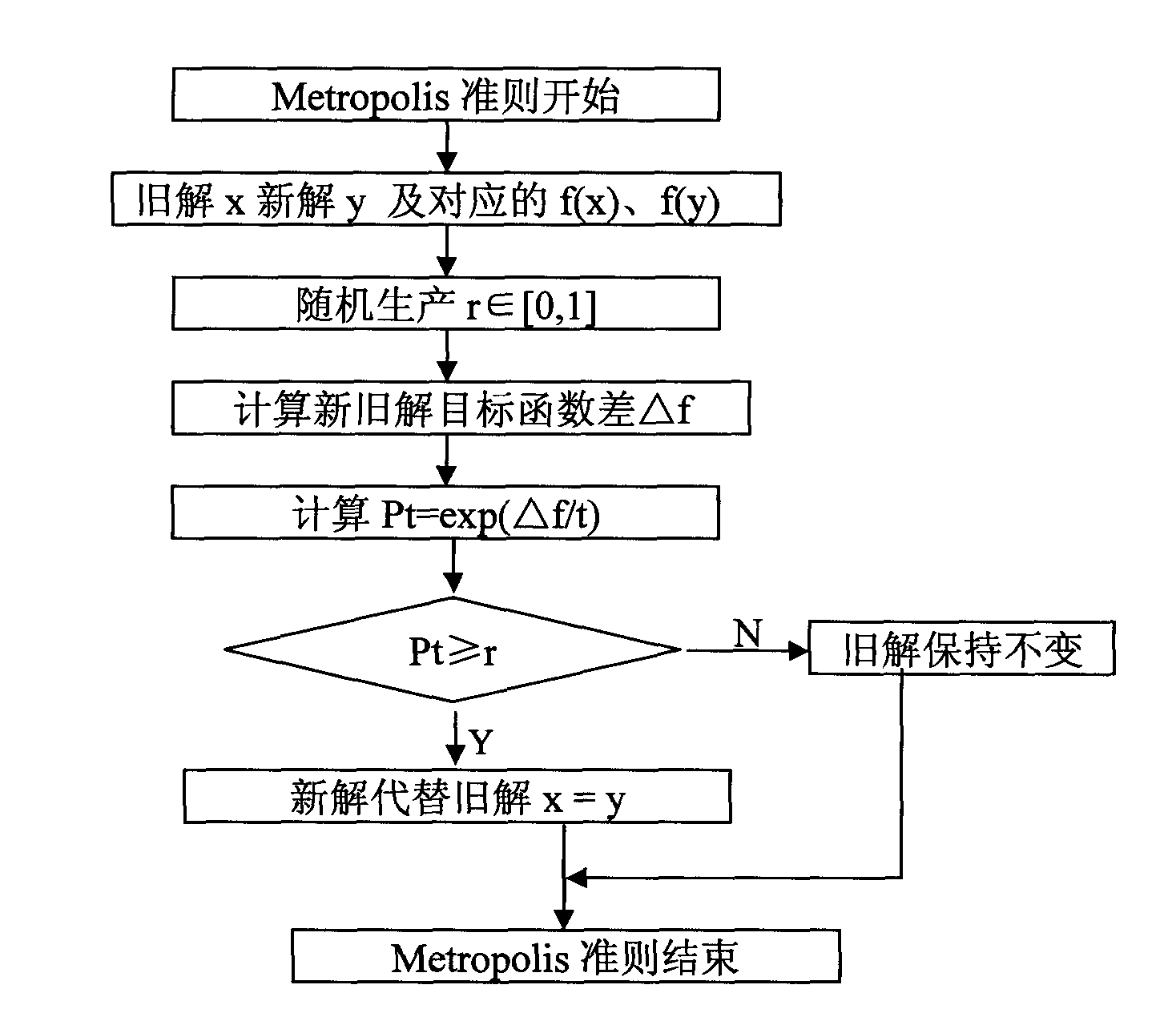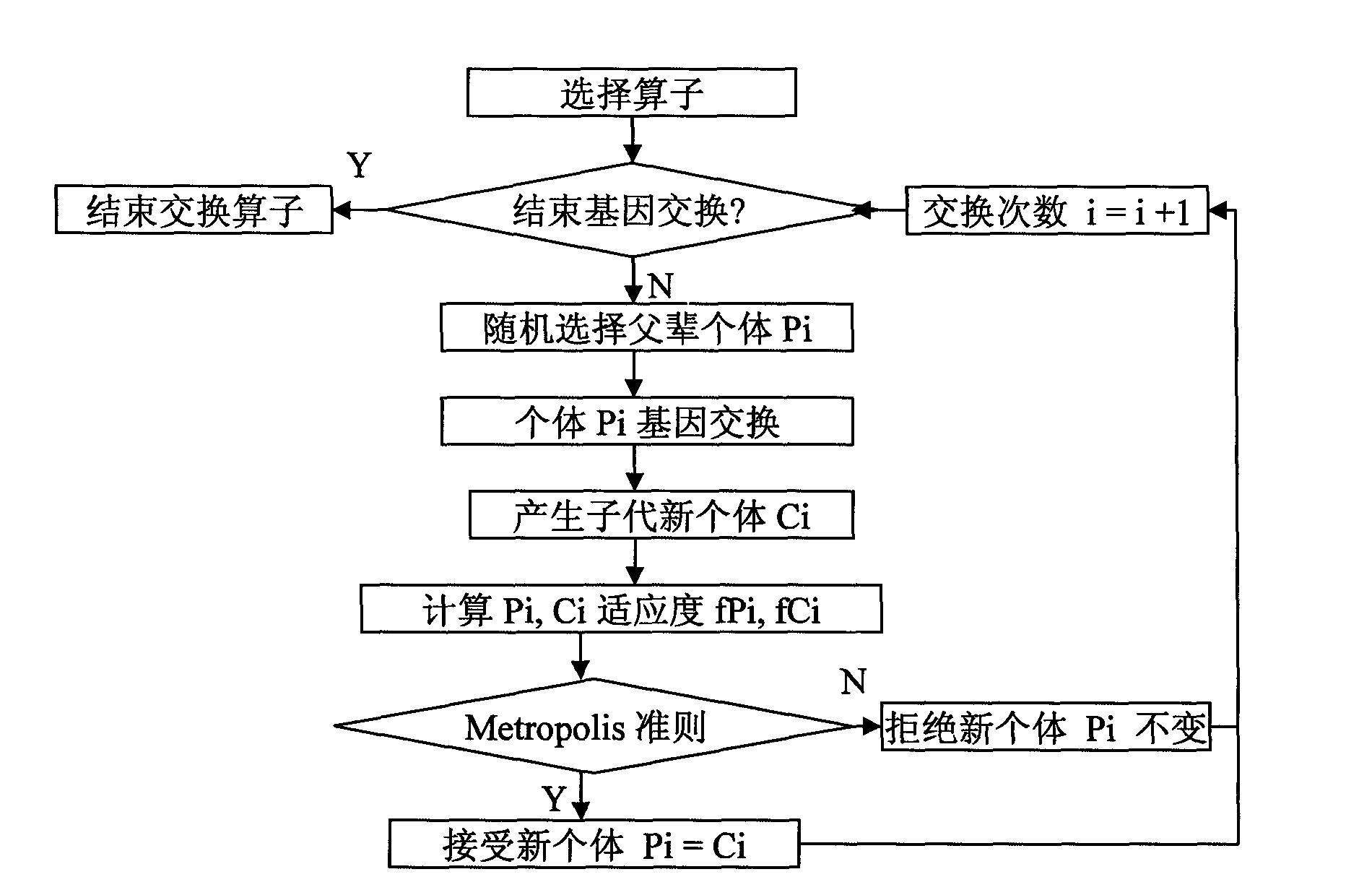Selection method for subintervals of near infrared spectral characteristics based on simulated annealing-genetic algorithm
A simulated annealing algorithm and near-infrared spectroscopy technology, which is applied in genetic rules, genetic models, and material analysis through optical means, can solve problems such as inability to ensure the global optimal approximate solution and premature convergence of genetic algorithms, so as to improve adaptability Accuracy level, high precision and strong predictive ability
- Summary
- Abstract
- Description
- Claims
- Application Information
AI Technical Summary
Problems solved by technology
Method used
Image
Examples
Embodiment
[0047] Such as Figure 7 It is the near-infrared spectrum of 100 cucumber leaves after standard orthogonal change pretreatment, and the spectral range is 10000-4000cm -1 , the number of scans is 32 times; the wavenumber interval is 7.712cm -1 ;Resolution is 16cm -1 . The spectra of 70 leaves were used as the calibration set, and the near-infrared spectra of the remaining 30 leaves were used as the prediction set. Set the minimum and maximum subintervals to 30 and 60 respectively, the number of groups to 60, the probability of gene exchange to 0.9, the probability of gene mutation to 0.01, the initial temperature to 200, the end temperature to 0.1, and the temperature decay coefficient to 0.95, using simulated annealing-genetic algorithm to select The characteristic subinterval, the specific process is as follows:
[0048] (1) When the number of subintervals is 30, the full spectrum is divided into 30 subintervals, and binary coded;
[0049] (2) The number of chromosomes i...
PUM
 Login to View More
Login to View More Abstract
Description
Claims
Application Information
 Login to View More
Login to View More - R&D
- Intellectual Property
- Life Sciences
- Materials
- Tech Scout
- Unparalleled Data Quality
- Higher Quality Content
- 60% Fewer Hallucinations
Browse by: Latest US Patents, China's latest patents, Technical Efficacy Thesaurus, Application Domain, Technology Topic, Popular Technical Reports.
© 2025 PatSnap. All rights reserved.Legal|Privacy policy|Modern Slavery Act Transparency Statement|Sitemap|About US| Contact US: help@patsnap.com



